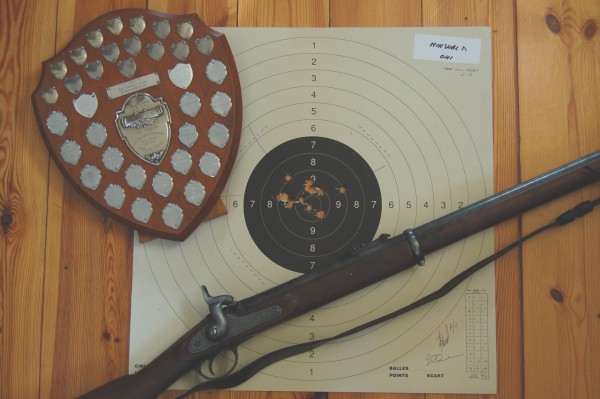U.P.:
Where to start, where to start. :hmm: How about at the beginning...
Uncle Pig said:
One problem with using NSSA shooters to teach about CW accuracy is that they do not shoot CW sights.
True, most don't, but there is a considerable subset of competitors who do. And they do quite well, considering they're shooting Kentucky at ranges shorter than those for which the sights were designed.
Uncle Pig said:
While the NSSA shooters are very good they modify their rifles so that they use modern improved sights on them. Most CW weapons used a bayonet lug as a sight not a 2 inch tall brass blade.
Haven't seen any of those two-inchers - they catch too much side wind! :haha: Most of those "modern improved sights" are no more than a 1/2-inch high front sight, and possibly a hole drilled into the rear leaf to make it a peep. No adjustables, etc. (except for the 1st Model Maynards, which came that way.) And, while many rifle muskets did combine the bayonet lug and front sight, that little piece of metal on top the lug that kind of resembles a barleycorn kernel made - and makes - a passable sight, too. When I figure out how to use the bayonet lug on my '42 smoothbore - tucked as it is on the bottom of the barrel - I'll give you a point there.
Uncle Pig said:
If you ever want to have fun hand an NSSA shooter an army standard rifle from the CW and see if they can hit any target at 25 yards.
Happened to me last year at the local rifle club's black powder shoot. Guy had an unaltered Dixie Miroku '61 Springfield, and he couldn't hit jack with it. After the competition he asked me if I'd care to try his. So I took his rifle, one round of MY ammo (Lyman old style minie sized about 4/1000 under his .580 bore, 44.5/weight 3f), held at 4 o'clock 11 inches low on the range 6-inch gong 50 yards out, and "BONG." Moral? Know where guns tend to shoot, and use good rounds.
Uncle Pig said:
I even had one tell me that he would never fire one with the original sights because it was so inaccurate it was unsafe. His opinion not mine.
Yeah, there's idjuts everywhere. You apparently met one of ours. :shake:
Uncle Pig said:
If you want to shoot clover leafs at 50 yards you can’t do it with a standard CW infantry weapon with original sights...
I wouldn't want to tell that to Hiram Berdan's boys, or the fellows from both sides who quite effectively sniped at each other with issue muskets at Little Round Top / Devil's Den. And Gen. Sedgwick might have had a word or two about it as well, but it turned out to his momentary chagrin that they
could hit something considerably
smaller than an elephant at "this distance"...
Uncle Pig said:
If you want to shoot a 1 foot circle at 50 yards you can, with some work.
See "BONG" above.
Uncle Pig said:
Don’t forget that by the end of the war both sides were issuing seriously undersized ammunition to facilitate faster loading.
An undeniable fact on the face of it. And many a good man still died every day.
All that to say this: The problem with "CW accuracy" was not the guns, but rather the minimum emphasis placed on actual shooting practice by most federal commanders. The men who
knew how to shoot, or were drilled on live fire, did relatively well even with the admittedly less-than-ideal sights they had.
Of course, the doctrine of the time generally called for mass fire at massed troops, and discouraged such "incidentals" as careful sighting. Those who
did know their sights and guns - both then, and now in the N-SSA - find them to be very accurate indeed. :thumbsup: :v





